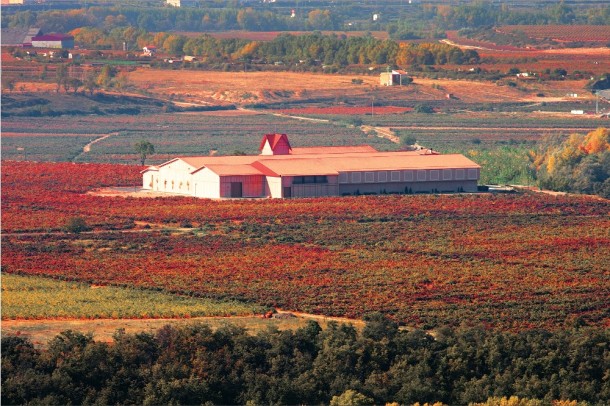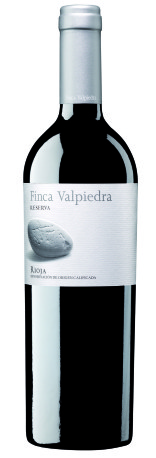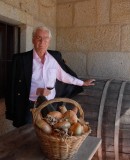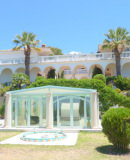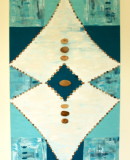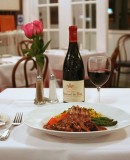Wines With Style
WINE COLUMN FOR EM NOVEMBER 2013 WINES WITH STYLE AJ Linn Wine.
There can be few other consumable products that get described in so many diverse ways, and about which there is less agreement. Eric Asimov, the veteran New York Times wine critic, doesn’t mince words. For him such descriptions as blueberries, tobacco, pepper and chocolate are ridiculous. ‘Have you seen anyone choose a wine because they prefer strawberries to gooseberries?’ he asks. Most wine drinkers will agree that Robert Parker and his acolytes have disproportionate influence, and common sense dictates there is only one way of rating wine: searching it out on the basis of pedigree and breeding, as you would an Arab thoroughbred. Tough on new wineries and new wines, but the law of supply and demand dictates that established brands have a head start. The French classification of Bordeaux still lists the chateaux in the same order as in 1855 with only minor changes since then, but the Spanish are more pragmatic, and here the drinking public has no need such inflexible cataloguing. With an impeccable background that dates back to Shakespeare’s time, few things can be classier than taking a copita of ice-cold fino sherry on a terrace looking out over the vineyards, or in the bar of a luxury hotel. Sherry sales are finally recovering, and the old iconic brands like Tio Pepe and La Ina have pulled through.
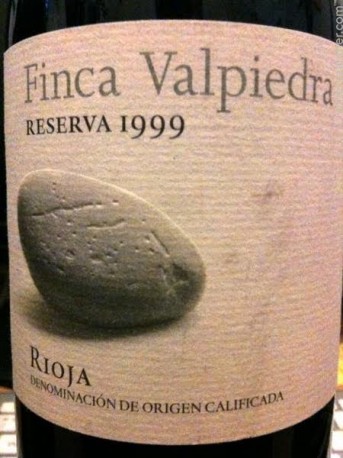 The smaller Valdespino bodega of the Estevez Group has not changed the label on its wines for 60 years and just reeks of style. Tio Diego single-vineyard amontillado is a drinking experience like no other; a bargain at €20. Red wines are by default more stylish than whites, and the greatest, classiest, granddaddies of them all are from La Rioja. The superb wines of Lopez Heredia and CVNE (Compañía Vinícola del Norte de España) were valid currency half a century ago, and the history of these wineries is the history of Spanish wine. CVNE’s beautifully-presented Viña Real Crianza costs only €6.95, although the bodega’s sensational Contino Graciano will set you back nearly €60, but worth it. So what about the Marquises you may ask, Riscal, Murrieta et al? They unquestionably have residual style but have been overshadowed by the likes of Muga and Martínez Bujanda, makers of superior wines. The latter’s Finca Valpiedra Reserva is made by Lauren Rosillo (who now makes his own superb Sedella wine in Málaga), and is a classic at €22, while Muga’s Reserva Selección Especial 2009 is one of Spain’s greatest at only €24. Their Prado Enea Gran Reserva 2005 at €35 is just sensational, so it is unsurprising that these wines are the best selling Riojas in the USA. Roda did not produce its first wine until 1992, with grapes sourced from17 selected vineyards: a blend of tempranillo, garnacha and graciano. Roda I is only made in good years, the last being 2008, which explains why it is often difficult to find, even at €43. That’s true style. There is also Roda II and Corimbo at more modest price levels. La Rioja Alta SA is another selective-vintage producer, and its Viña Ardanza has only declared a vintage in nine years since 1964; the current version is 2004. What could be more elegant than having to wait half a decade for a new vintage? Amazing value at only €20.
The smaller Valdespino bodega of the Estevez Group has not changed the label on its wines for 60 years and just reeks of style. Tio Diego single-vineyard amontillado is a drinking experience like no other; a bargain at €20. Red wines are by default more stylish than whites, and the greatest, classiest, granddaddies of them all are from La Rioja. The superb wines of Lopez Heredia and CVNE (Compañía Vinícola del Norte de España) were valid currency half a century ago, and the history of these wineries is the history of Spanish wine. CVNE’s beautifully-presented Viña Real Crianza costs only €6.95, although the bodega’s sensational Contino Graciano will set you back nearly €60, but worth it. So what about the Marquises you may ask, Riscal, Murrieta et al? They unquestionably have residual style but have been overshadowed by the likes of Muga and Martínez Bujanda, makers of superior wines. The latter’s Finca Valpiedra Reserva is made by Lauren Rosillo (who now makes his own superb Sedella wine in Málaga), and is a classic at €22, while Muga’s Reserva Selección Especial 2009 is one of Spain’s greatest at only €24. Their Prado Enea Gran Reserva 2005 at €35 is just sensational, so it is unsurprising that these wines are the best selling Riojas in the USA. Roda did not produce its first wine until 1992, with grapes sourced from17 selected vineyards: a blend of tempranillo, garnacha and graciano. Roda I is only made in good years, the last being 2008, which explains why it is often difficult to find, even at €43. That’s true style. There is also Roda II and Corimbo at more modest price levels. La Rioja Alta SA is another selective-vintage producer, and its Viña Ardanza has only declared a vintage in nine years since 1964; the current version is 2004. What could be more elegant than having to wait half a decade for a new vintage? Amazing value at only €20.
How about the Navarra region’s chances of being included under this title? Well, there are some spectacularly classy wines, starting with Viña Magaña’s Calchetas. This €28 wine has harvested a storm of praise internationally, and although the most expensive of a trio with its Dignus starting at €8, the price is not excessive, but the identity of the grapes used is a secret. Of course the Chivite brand leads Navarra and reeks of class, with its Colección 125 range established as a showcase of the region’s best. Its Arinzano selection has the coolest presentation and the La Casona 2008 (tempranillo and merlot) is still improving in the bottle. Viña Salcedo, now part of the Group, started in business in 1969, makes impeccable wines that you can be proud of ordering in a restaurant. The Puente de Salceda 2009 is a snip at €12. If you get the impression that it is necessary to pay top euro for a stylish wine, the impeccable pedigree of the Pascual family, traceable back to the 14th century, gives its name to Bodega Pascual’s faultless Ribera del Duero reds. The Buró de Peñalosa Crianza is backed by decades of lineage yet only costs €12, and the Hereda Peñalosa Tinto Roble a sensational €7. Is the famous Vega Sicilia a classy wine? There is no doubt its bloodline is above reproach, and counting Churchill as a fan was a marketing coup like no other. Nevertheless perhaps in the style rankings it loses out to cooler competitors like Pingus, Carmelo Rodero, Viña Sastre, Alion, Pago de Carraovejas, and Hacienda Monasterio. All these wines ooze class and quality and any drinker would be proud to be seen enjoying them, although Arzuaga, López Cristobal and Abadia Retuerta are the unquestioned style kings of the Duero. The Arzuaga family is originally from Navarra, and Amaya Arzuaga is a well-known fashion designer who has a wine made for her, Amaya, costing a very cool €60, while the regular Reserva 2009 is excellent value at €35. López Cristobal is the newest of the bunch but makes wine that everyone wants. Founded in 1994 in Roa, at the heart of Ribera del Duero, the quality of its products have made it a trend-setter.
The Roble Tinto 2012 is €7 while the superior and beautifully-presented Bagús 2010 is €26. Abadia Retuerta is just outside the boundaries of the DO but none the worse for that, and in 2005 it was voted the Best Wine in the World at the International Wine Challenge. Around €18. Are there no other Spanish regions that produce wines with style? Undeniably and precisely owing to the fact these other regions are newer do the lesser number of stylish wines stand out. In the Galician Rías Baixas, for class you can cut with a knife, the long-established José Pariente bodega is supreme. Its Cuvée Especial 2012 Verdejo looks, feels and tastes like the quality champion it is; €30. Style can also be projected by ownership, and the Ronda bodega of Cortijo Los Aguilares, established by Basque businessman José Antonio Itarte in 1990, is elegance personified. It took his winemaker, Bibi Garcia, who had never made Pinot Noir previously, no time at all to bring home three international gold medals for her Pinot Noir (€25), but its trendy Tadeo 2009 at €30 is the star turn. No tour around Spain’s trending wineries would be complete without a mention of Somontano’s Viñas del Vero (owned by Gonzalez Byass.). Try the Gewürztraminer Colección 2012 at €9.95. Toro’s Fariña bodega has made classy wines from tinta del país grapes for decades, but El Bierzo’s Dominio de Tares wins top mention. Using the fashionable Mencia grape from 60-year old vines, its Cepas Viejas sells for €13 with a stonkingly good white Godello available at €13.50
Disclaimer: The views, opinions and positions expressed within this guest article are those of the author AJ Linn alone and do not represent those of the Marbella Marbella website. The accuracy, completeness and validity of any statements made within this article are not guaranteed. We accept no liability for any errors, omissions or representations. The copyright of this content belongs to AJ Linn and any liability with regards to infringement of intellectual property rights remains with the author.

